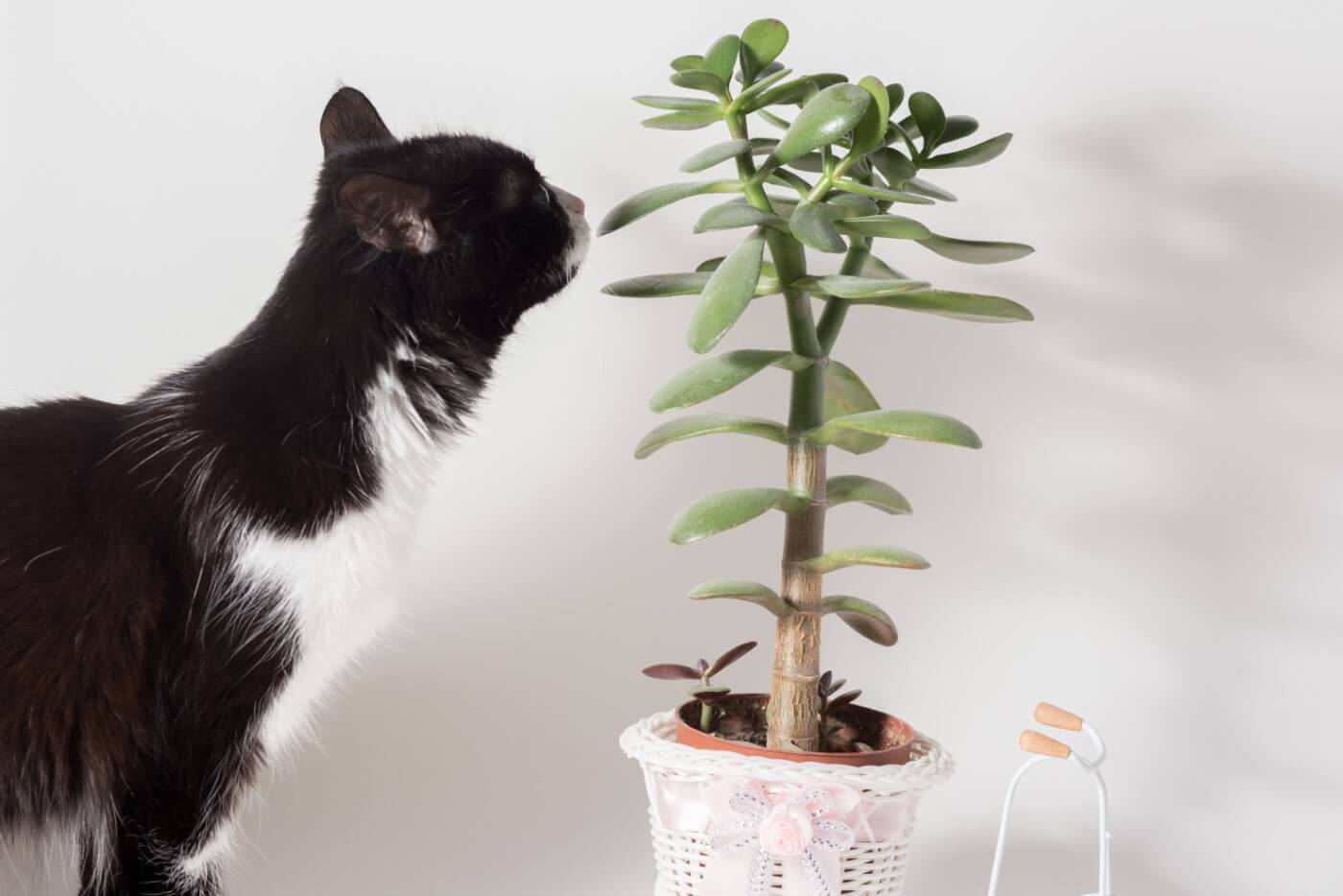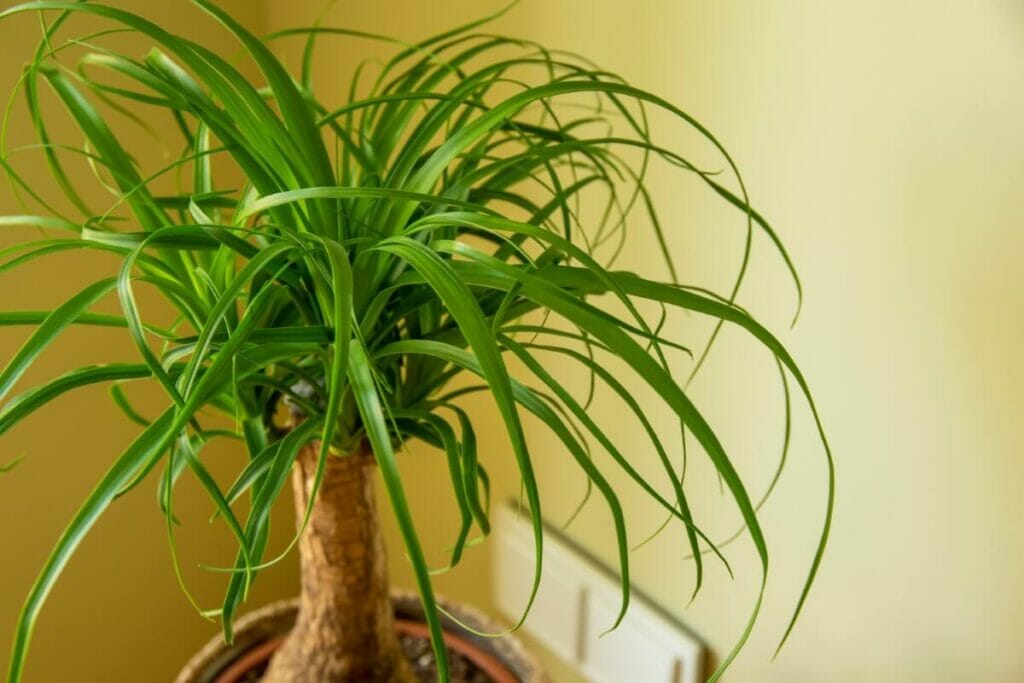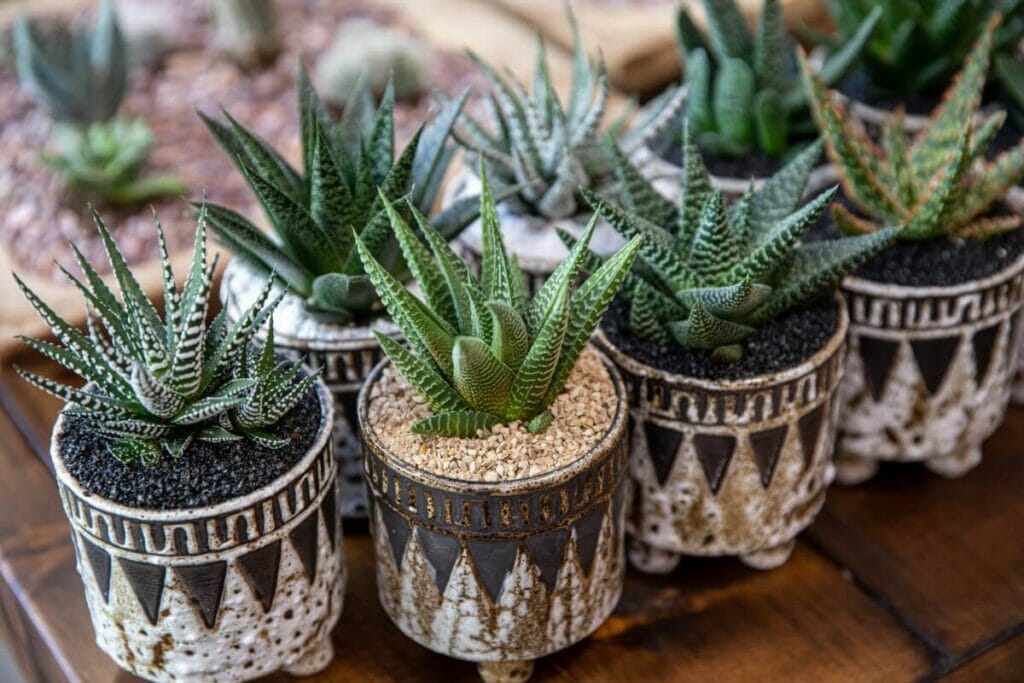Jade Plant Toxicity: What the Science (and Vets) Say
Jade plants are mildly toxic to humans, but they can be dangerous to pets. All types of Jade plants contain unknown toxic compounds that can cause vomiting, seizures, and breathing problems in animals. In this guide, we’ll cover everything you need to know about Jade plant toxicity and some alternative houseplant options to consider.

Are All Types of Common Jade Plants Toxic?
Unfortunately, there are no safe varieties of Jade plants that are free from toxic elements. Choosing a particular type of Jade plant won’t protect your pet from potential illness. Only settling for an alternative to this plant that is considered safe for curious cats and dogs will completely prevent issues. Even trying to keep the Jade plant away in a separate room can be difficult and may fail if the pet makes it into the wrong space.
Crassula ovata is the most popular Jade plant commonly sold for houseplant use. However, all members of the Crassula genus grown indoors are considered toxic or potentially toxic to animals. They’re also mildly toxic to humans, but pets tend to react much stronger. Even horses can react to Jade plants if they’re grown outdoors for landscaping. Whether they’re labeled as Jade plants, Baby Jade, dwarf rubber plants, or friendship trees, these plants contain the same unknown toxins.
All 1,500 members of the Crassula genus have some amount of toxicity for pets, so check the label for the scientific name of any plants you want to bring into your home or yard.
What Happens to Your Pets If They Chew or Ingest a Part of a Jade Plant?

The first sign that a cat or dog has ingested parts of a Jade plant is vomiting. Parrots, horses, rabbits, and other pets often can’t vomit, so they may stop eating and drinking instead. It’s easy to miss this early warning sign. If you check the vomit, you may or may not find the actual piece of Jade plant they ingested. Finding it can help narrow down the potential causes of their illness, so try to locate any ingested plant material.
If the pet doesn’t vomit out the toxic material, the Jade plant may cause them to become lethargic and refuse to move or respond to the usual treats or commands. Pets may stumble and fall down, seeming dizzy and uncoordinated. This is a more serious sign of toxic reaction to the Jade plant. Try to watch your pets for early warning signs or keep Jade plants away entirely to ensure there’s no chance of potential ingestion. In advanced cases, seizures and trouble breathing can occur.
What To Do If Your Pet Has Symptoms or is Unwell?
If you suspect your pet has consumed Jade plant but hasn’t shown symptoms yet, confine them to a small space and watch them closely for changes in behavior. Once you notice vomiting or find proof they’ve eaten a piece of the plant, make an appointment with your vet to see them within the next 12 hours. On the weekends or holidays, book an appointment at an emergency vet instead. While the reaction to the toxins may not be serious, it’s better to start treatment early rather than wait until symptoms accelerate to lethargy or seizures.
Pets that seem to be having only a minor reaction to the Jade plant can likely remain at home. Call your vet and discuss their current condition and how much you think your pet consumed. Animals that can’t regurgitate, including rabbits and most parrots, will need to see a vet immediately since they will absorb more of the toxic compounds. You can also contact the Animal Poison Control Center at (888) 426-4435 to get more advice on whether to see a vet immediately or not based on your pet’s condition and species.
Tips to Keep Your Pets Away from Jade Plants

Jade plants are tricky to keep in a home where there are dogs, cats, or even children sharing the space. But with some foresight and careful planning, you can find a place in the home with the right conditions for Jade plant growth that is protected from curious pets.
Jade plants prefer cooler temperatures than many other houseplants, with ideal temperatures between 65 and 75 degrees F. They need full to partial sun, so using a plant light about 6 inches above the leaves allows you to keep the Jade plant anywhere away from pets.
Avoid placing them near doors or windows where drafts can cause leaf drop or yellowing jade plant leaves. A high shelf will work fine if there’s sufficient space for the plant light. Setting the plant by a window can cause issues with temperature and light levels, not to mention putting them within reach of pets.
Try moving the Jade plant outside in the summer to keep it away from indoor-only pets for at least a few months at a time. Don’t rely on your pet’s previous history of disinterest in plants. It only takes one moment of interest to lead to consumption.
Tips and Considerations for Handling Jade Plants
While Jade plants aren’t considered dangerous to humans, even if consumed by accident, they’re somewhat irritating. The problem is particularly pronounced when you’re pruning a jade plant or cutting it for Jade plant propagation. This releases a potent sap to help the plant heal, but it is irritating to the skin. Wearing a pair of gardening or latex gloves during pruning and repotting will protect you from any irritation during handling.
There’s little need for any other precautions when spending time around Jade plants. If you’re just moving the potted plant around or checking it for pests, there’s no need for gloves.
5 Alternative Pet-Friendly Plant Options
There’s no need to struggle with keeping your Jade plants away from your curious cat or dog. Instead, consider one of the many beautiful pet-safe houseplants recommended for homes with animals. Try these five alternatives that offer some of the same easy care or charm of the Jade plant without any toxicity issues.
1. Ponytail Palm

Safe and offering a tree-like appearance to rival a mature Jade plant, the Ponytail Palm is a great indoor palm tree choice for homes with pets. Not only are the leaves and stems safe for curious pets who take a sniff, but the leaves are not very appealing to animals due to their thin, grass-like appearance.
2. Holiday Cacti

Whether you choose a variety known for blooming during a certain holiday or just any old Schlumbergera, you’ll enjoy how the plant requires even less care than a Jade plant. It’s a succulent similar to the Jade genus without all the toxicity concerns.
3. Haworthia

Almost all Haworthia varieties are non-toxic, making them safe for homes with pets. They have bright colors and patterns that can rival any Jade plant. They’re also easy to keep in areas that are too warm for Jade plants, as long as there’s enough light to keep them happy.
4. Money Tree

While this common name is sometimes used for the Crassula ovata also known as the Jade plant, it’s better applied to the Pachira Aquatica plant. This tall, tree-like houseplant is safe for all pets and offers a stately appearance while requiring only some of the light the Jade plant demands.
5. American Rubber Plant

With similarly rounded and shiny green leaves packed on multiple stems, this is one of the closest houseplants in appearance to the Jade plant. Yet it’s much safer for curious pets and children alike. It’s even safe for landscaping around horses in areas where they can grow outdoors.
Wrapping Up
The Jade plant is one houseplant best suited for homes without pets. Unless you have a spot with the right conditions where you can guarantee your pet can never reach it, choose one of the many alternatives that are safer.
Andrew is the Editorial Director at Petal Republic. He holds a BSc degree in Plant Sciences and has trained professionally at leading floristry schools in London and Paris. In amongst overseeing a global editorial team, Andrew's a passionate content creator around all things flowers, floral design, gardening, and houseplants.
